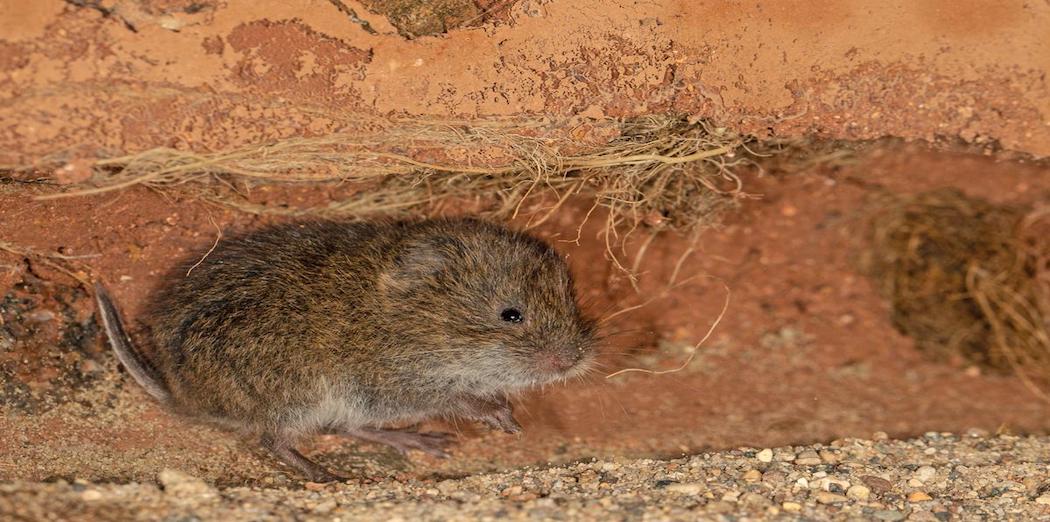
Commonly called meadow mice, voles thrive in both grasslands and mountainous areas. They can be found throughout the United States and feed on a variety of plants. Their feeding habits damage growing trees, lawns, and gardens.
We can help you get rid of vole problems. Call today: 1.800.274.8837
Find Service in your Area:
Tunnels in the grass? Mouse-like rodents in your shrubs and landscaping? Those scurrying little critters may well be voles. Call Critter Control today for effective vole removal and exclusion services.
Get them out.
Keep them out.®
Roughly the size of a house mouse, voles are commonly confused with their rodent relative. Voles are usually dark brown to black in color and have coarse pelts. Their undersides are typically gray or white. Both males and females are approximately the same size and color. The tail of the vole is covered in fur and noticeably shorter than the rest of the body.
More information about what a vole looks like.
While voles appear similar to mice, they are easily distinguished thanks to their shorter tails and less-pronounced ears.
Thought you saw a mouse with a short tail? It could be a vole.
Depending on the species, voles live in various habitats including meadows, grassy marshes, near orchards, and even on mountainous slopes. As burrowing rodents, voles spend most of their time underground. Building vast tunnel systems, they prefer areas of dense vegetation that allow them to conceal the entrances to their subterranean habitats from predators.
Are voles known to enter homes or yards?
Voles prefer open spaces and are poor climbers, making entry into homes extremely infrequent. Nevertheless, the rodents will inhabit grasslands and croplands near buildings, close to gardens, and in landscaped areas of yards. Fields and gardens provide voles with additional sources of food.
Do voles harm people or property?
Most of the damage inflicted by voles occurs when the rodents attack garden plants and tree trunks. Voles gnaw at the bark of trees near the ground, causing trunk and root girdling, which disrupts the flow of nutrients and water to the tree. Vole damage to trees occurs so low to the ground that it may go unnoticed until the effects are irreversible.
The tunneling nature of the pest rodents also causes damage to turf and landscaping in addition to interfering with irrigation lines. Voles carry fleas and ticks, which facilitates the transmission of various harmful diseases such as tularemia and plague, as well.
To keep voles off your property, utilize principles of habitat modification. Eliminate weeds and any other ground cover that helps hide the entry points to vole tunnels. Certain exclusion methods, such as putting up fencing around trees and saplings and burying wire mesh into the ground to discourage tunneling near gardens and crops, also help reduce the possibility of vole infestation.
Vole populations fluctuate depending on available food sources, predation, and climate. To deal with especially large and uncontrollable populations of voles, contact a trained wildlife removal specialist. The professional wildlife specialists at Critter Control understand how to utilize humane trapping methods to ensure safe and effective vole removal.